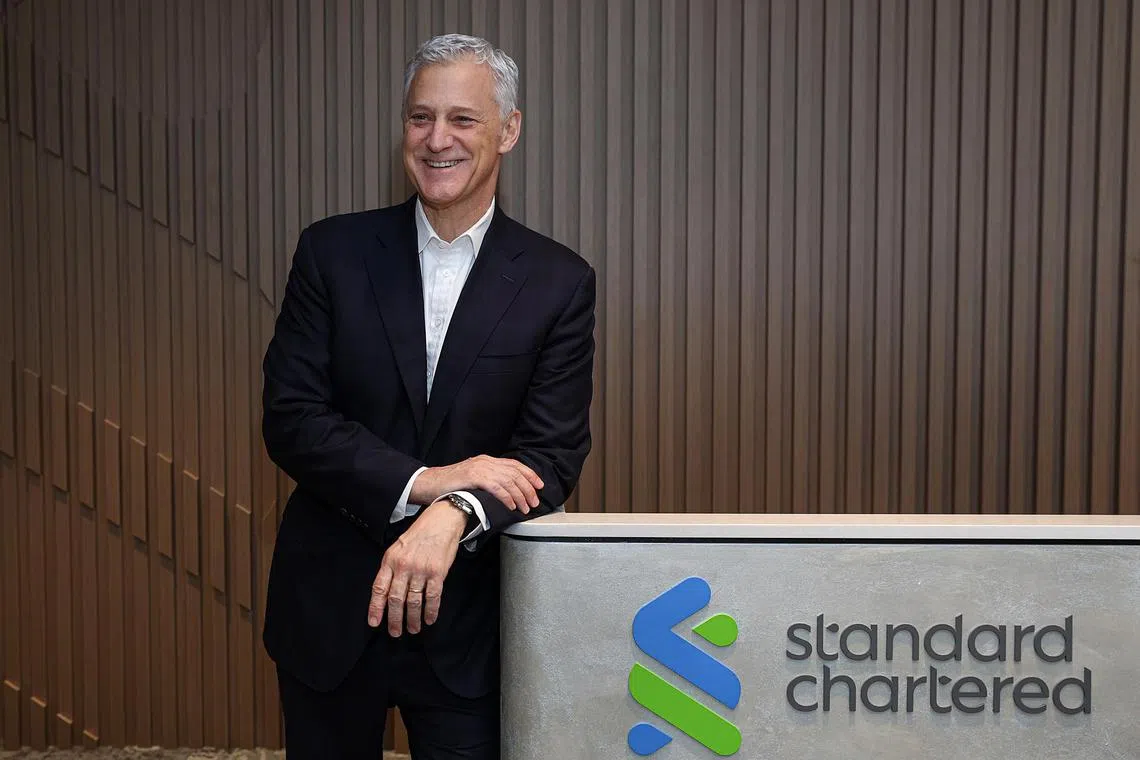Singapore can benefit as StanChart records ‘really good net new money inflows’: CEO
Sign up now: Get ST's newsletters delivered to your inbox

StanChart group chief executive Bill Winters said the bank's US and European client base is growing very fast due to the bank's extensive footprint in the region.
PHOTO: THE BUSINESS TIMES
Follow topic:
SINGAPORE - Standard Chartered Bank (StanChart) has recorded “really good net new money inflows” in 2022, its group chief executive Bill Winters said at a media briefing on Monday.
Mr Winters said there has been a “steady stream of money moving into Hong Kong and Singapore”, the two biggest markets for the Asia-focused bank.
Based on StanChart’s 2022 annual report, Hong Kong contributed 25 per cent to underlying profit before taxation while Singapore contributed 21 per cent.
With the inflows of cash, Mr Winters said there is now a surplus of cash in the Hong Kong banking system.
“The cash is coming from Western investors who are parking money in Hong Kong and waiting to invest in (mainland) China, and from Chinese investors who are moving some portion of their wealth into Hong Kong,” he added.
Singapore, he said, is getting some portion of that wealth as well as it becomes a “magnet for wealthy people from everywhere, including from China”.
Mr Winters is in Singapore after a business trip that took him to the bank’s main markets in the Middle East, Hong Kong and mainland China.
He said business is good despite the economic challenges, and that is partly due to the opening up of China, which will be a catalyst for StanChart’s business.
StanChart had a good 2022 in China, where the business grew 10 per cent onshore despite Covid-19 restrictions, and over 20 per cent offshore, he said, noting that the trend seems to be “continuing very, very strongly”.
Singapore, being one of the biggest foreign investors in China, is poised to benefit, he added. “A meaningful piece of the business we do in Singapore relates to Chinese money that is moving in and out.”
Noting that intra-regional trade within the Asian region is “picking up very nicely”, he said this has thrown up opportunities for the bank.
Mr Winters said Chinese manufacturers looking to diversify their production bases into Vietnam, Indonesia, Malaysia or even India are turning to StanChart for banking services because of its footprint across Asia, Africa and the Middle East.
“We have a big market share in providing banking services to these Chinese manufacturers outside of China. It has been and will continue to be a big boost for us.”
This strong presence across its key markets has also made StanChart attractive to American and European corporations, he added.
“Our US and European client base is growing very fast because we have something that is special for them, which is our presence in this part of the world. At the same time, we have a big US dollar clearing business and this is an important service that US or European companies need.”
Undaunted by fears of an economic slowdown in the US and Europe, Mr Winters is confident that while companies could cut down overall investment activities, any “marginal investment” will still flow into high-growth markets in China, India and Asean.
StanChart is present in 21 locations in Asia, including all 10 Asean economies, India and China.
Mr Winters also said he is eyeing the new economy space – fintech firms such as payment companies – as potential customers for StanChart’s banking services.
“They are engaging in banking products but operate outside the regulated banking sphere. They will need a connection to the formal banking sector – they need deposit accounts, they need access to payment systems, and they need to clear US dollars,” he said.
“We know how to build them and we know how to help them get the best out of the formal financial system in a regulated way.”


